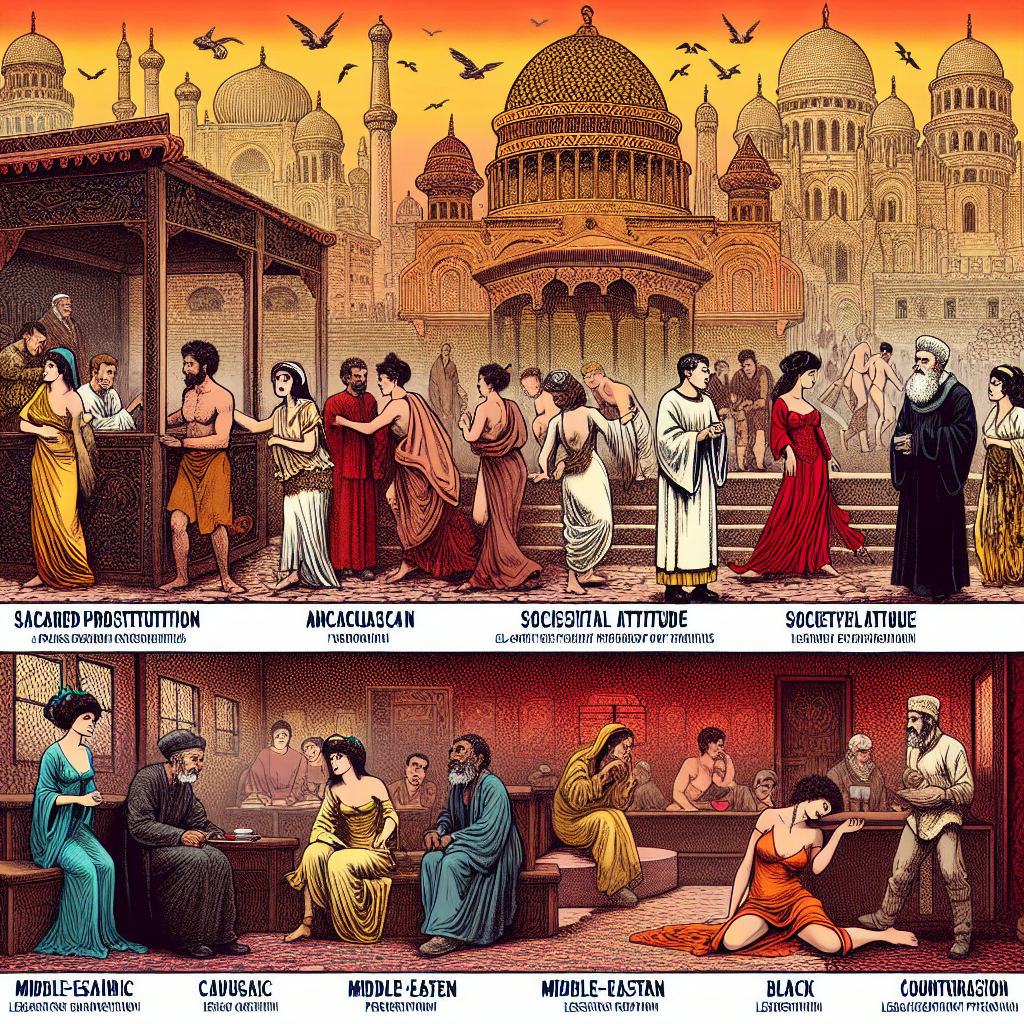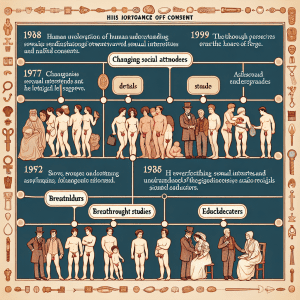Historical Perspectives on Prostitution: From Ancient Temples to Modern-Day Legalization Debates
Prostitution, often coined as the “world’s oldest profession,” has a rich and multifaceted history. Its existence spans across millennia, depicted in various forms and cultural settings from ancient civilizations to present-day discussions on legalization and rights. Dive into this titillating journey as we unravel prostitution’s intriguing past and the heated contemporary debates surrounding its legalization.
Prostitution in Ancient Civilizations
Prostitution’s earliest records trace back to ancient cultures, where it was sometimes intertwined with religious practices. In these societies, it held a multifaceted role, often diverging greatly from the stigmatized views of modern times.
Sacred Prostitution in Ancient Mesopotamia
One of the earliest mentions of prostitution comes from ancient Mesopotamia, particularly in the temples dedicated to the goddess Ishtar (or Inanna). Here, sacred prostitution was prevalent.
- Women, known as priestesses or hierodules, engaged in sexual rites as part of religious worship.
- These practices were believed to ensure fertility and secure divine favor.
- Sacred prostitution reflected the intertwining of spirituality and sexuality, distinct from modern perceptions of sex work.
Prostitution in Ancient Greece and Rome
The Greeks and Romans held a different yet intricate view on prostitution. In Athens, brothels were state-run enterprises, indicative of a more regulated approach.
- Hetaerae: Highly educated courtesans who entertained prestigious men.
- Pallakai: Concubines who lived under specific patrons.
- Pornai: Brothel workers who were often slaves.
The Romans shared a similar regulated system, where prostitution was legal but morally scrutinized. However, courtesans and higher-status sex workers enjoyed relative freedom and influence.
Medieval and Renaissance Europe: Evolving Views
The medieval period saw a shift in attitude toward prostitution, intertwined with burgeoning Christian doctrines.
Medieval Church and Prostitution
The Church’s attitude was ambivalent—on one hand, condemning prostitution as sinful, while on the other, recognizing its social inevitability.
- Brothels were tolerated in many medieval cities as a means to control what was perceived as male sexual vice.
- Efforts like “Magdalene houses” aimed to reform and reintegrate prostitutes into respectable society.
Renaissance: The Courtesan Culture
The Renaissance brought about a different flavor of sex work. Notably, in Italy, courtesans were known for their wit, artistic talents, and linguistic abilities.
- These women often held significant influence in cultural and political spheres, enjoying a level of autonomy uncommon for their time.
Prostitution in the Modern Era
The modern era brought with it legislation and reform movements that drastically changed the landscape of sex work.
Victorian Morality and Legislation
The Victorian period, especially in Britain, saw a clampdown on prostitution driven by moral reformers.
- Contagious Diseases Acts: Targeted at curbing venereal diseases by subjecting prostitutes to mandatory health checks, albeit criticized for being invasive and discriminatory.
- Social Purity Movement: Advocated for the abolition of prostitution, often demanding harsh laws against sex work.
Contemporary Debates on Legalization
Today, the discourse around prostitution and its legalization is highly polarized. Modern views are shaped by complex factors such as human rights, gender equality, and public health.
Arguments for Legalization
- Proponents argue that legalization can offer sex workers legal protection, healthcare, and safer working conditions.
- Legal frameworks can help combat human trafficking by distinguishing consensual sex work from exploitation.
Arguments Against Legalization
- Opponents believe that legalization might normalize and perpetuate exploitation and violence against women.
- Some argue it could increase human trafficking under the guise of legal sex work.
Conclusion
From divine rites in ancient temples to impassioned contemporary debates, the history of prostitution is a testament to societal evolution. Understanding its past can offer insightful perspectives on modern discourse, guiding us towards informed and compassionate approaches to one of history’s most enduring professions.
Stay tuned as we continue to explore more fascinating historical narratives and contemporary issues. Who knew history could be this riveting?



